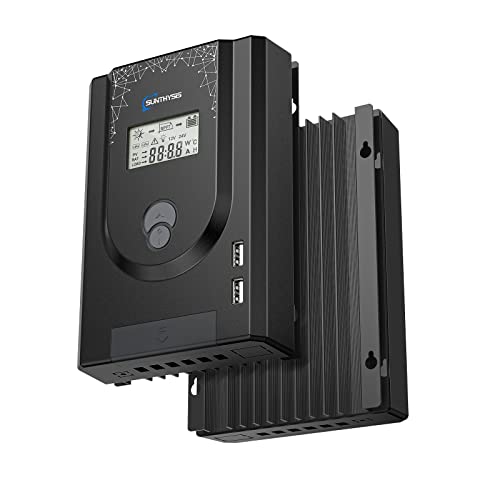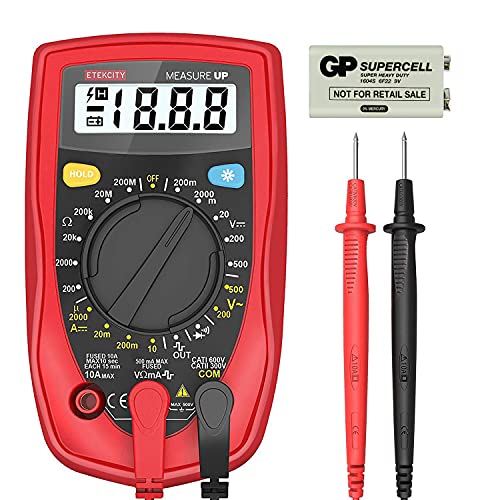In this step-by-step guide, we will walk you through the process of monitoring the performance of solar panels. The purpose of this guide is to help you understand how to effectively track and evaluate the efficiency and output of your solar panels. By monitoring their performance, you will be able to identify any issues or inefficiencies, allowing you to take corrective measures and ensure optimal energy production. This guide will cover all the necessary steps, from choosing the right monitoring system to interpreting the data and troubleshooting potential problems.
Top-Rated Solar Panel Installation Options
Choose a Monitoring System
To research and select a monitoring system that suits your needs, follow these steps:
- Identify the type of solar panels you have: Start by determining the brand, model, and specifications of your solar panels. Different monitoring systems may be compatible with specific types of panels, so it is important to ensure compatibility.
- Determine the level of data you want to monitor: Consider whether you require basic monitoring, such as real-time energy production data, or if you prefer more advanced features like individual panel-level data or historical performance analysis. This will help you narrow down your options.
- Set a budget: Determine how much you are willing to spend on a monitoring system. There are a wide range of options available, from affordable basic systems to more sophisticated and expensive solutions. Having a budget in mind will help you narrow down your choices.
- Look for real-time data and performance tracking: Ensure that the monitoring system you select provides real-time data, so you can monitor energy production and performance as it happens. It should also have the capability to track key performance metrics, such as efficiency, system uptime, and potential issues or faults.
By following these steps, you can effectively research and select a monitoring system that meets your specific needs.
Install Monitoring Equipment
To install the monitoring equipment, follow the manufacturer’s instructions carefully. These instructions will provide specific guidance on the installation process. Here are some general steps to consider during the installation:
- Connect the sensors or meters to your solar panels, inverter, or electrical system according to the manufacturer’s recommendations.
- Ensure that all connections are secure and properly tightened to avoid any issues during operation.
- Configure the monitoring system as per the provided instructions. This may involve settings such as connecting to a Wi-Fi network or calibrating the system with your specific installation parameters.
By following these steps, you can successfully install the monitoring equipment and ensure its proper functioning. Always refer to the manufacturer’s instructions for any specific details related to your monitoring system.
Set Up Monitoring Software
To set up monitoring software for your solar panels, start by installing any necessary software or apps provided by the monitoring system. This can typically be done by locating the software or app on the manufacturer’s website and downloading it onto your computer or smartphone.
Once the software or app is downloaded, follow the instructions provided to connect the monitoring equipment to your Wi-Fi or internet connection. This is usually done by accessing the Wi-Fi or network settings on the monitoring device and selecting your desired network from the available options. Enter the network password if required.
Next, it’s time to create an account on the monitoring system’s platform. This will allow you to receive and access the data from your solar panels. Simply click on the “Sign up” or “Create account” button and fill in the required information, such as your name, email address, and password. Make sure to choose a strong password to ensure the security of your account.
Once your account is created, you may need to verify your email address by clicking on a verification link sent to your inbox. After verification, log in to your account and proceed to configure the settings according to your preferences. This may include setting up notifications for when your solar panels generate a certain amount of power or view historical data and trends of your energy production.
Remember, each monitoring system may have its own specific steps and features, so it’s essential to carefully read the instructions provided by the manufacturer. If you encounter any difficulties during the installation or configuration process, don’t hesitate to reach out to the manufacturer’s customer support for assistance.
By installing the necessary software, connecting to your Wi-Fi, creating an account, and configuring the settings, you will be able to monitor your solar panel’s performance and ensure optimal energy generation.
Monitor Performance Metrics
Regularly check the performance metrics of your solar panels once the monitoring system is set up. Monitoring these metrics enables us to assess the efficiency and productivity of our solar energy system. Key performance parameters to pay attention to include energy production, system efficiency, and weather conditions.
To monitor these metrics, we need to access the monitoring system’s dashboard or interface. This can typically be done through a web portal or mobile app provided by the monitoring system provider. Once logged in, we should be able to view an overview of our solar panel system’s performance metrics.
Review the energy production metric to track how much energy our solar panels have generated over a given period. Compare this to our expectations and historical data to identify any significant deviations. An unexpected drop in energy production may indicate a potential issue, such as a faulty panel or inverter.
Next, analyze the system efficiency metric, which reflects how effectively our solar panels convert sunlight into electricity. A decrease in system efficiency could be indicative of dirt or debris blocking the panels, shading issues, or malfunctioning equipment. It is important to identify and address these efficiency issues promptly to maximize the output of our solar panel system.
Finally, consider the weather conditions metric. Monitoring this metric allows us to understand how different weather conditions impact the performance of our solar panels. For instance, we can assess whether cloud cover or excessive heat affects the energy production. By tracking these conditions, we can make informed decisions about potential system modifications or optimizations.
Analyzing the data from these performance metrics helps us identify potential issues or areas for improvement in our solar panel system. By proactively monitoring and addressing any problems, we can ensure optimal performance and maximize the benefits of our solar energy system.
Troubleshoot and Maintain
To troubleshoot any abnormalities or underperformance, start by utilizing the monitoring system’s data and resources. Analyze the data provided by the system and look for any deviations or anomalies that may indicate an issue. For example, if you notice a sudden spike in temperature readings from a temperature monitoring device in a server room, it could indicate a potential overheating problem.
Additionally, consult the manufacturer’s documentation for guidance on troubleshooting specific issues. The documentation often includes step-by-step instructions and troubleshooting tips tailored to the equipment you are using. For instance, if you are experiencing connectivity problems with a network monitoring device, the manufacturer’s documentation might provide instructions on resetting the device or troubleshooting network configurations.
If the issue persists or requires further expertise, seek professional assistance. Contact the manufacturer’s support team or consult with a qualified technician who specializes in maintaining monitoring equipment. They can provide more advanced troubleshooting solutions or perform repairs if necessary.
Furthermore, it is crucial to regularly maintain your monitoring equipment to ensure its proper functioning. This includes routine tasks such as cleaning the devices, inspecting cables for damage, and checking for any loose connections. For instance, if you have a power monitoring system, you should periodically check the power cords for frays or loose plugs.
In conclusion, when troubleshooting issues in your monitoring system, rely on the system’s data and available resources. Consult the manufacturer’s documentation and seek professional help when needed. Regular maintenance of your monitoring equipment is essential to ensure its reliable performance.
Optimize Performance
Use the data from the monitoring system to identify ways to optimize the performance of your solar panels. Adjust the angle and orientation of the panels based on the data to maximize sunlight exposure and increase energy generation. Regularly clean the panels to remove dust, dirt, and debris that may hinder their efficiency. Additionally, consider adding energy storage components to your system, such as batteries, to store excess energy for later use. Continuously monitor the performance of your solar panels and make necessary adjustments to ensure maximum efficiency.
Final Thoughts on Solar Panel Monitoring
In conclusion, monitoring the performance of solar panels is crucial for maximizing energy production and addressing potential issues. By implementing the steps outlined in this blog post, we can effectively monitor and maintain our solar panel systems. This will not only increase the efficiency and longevity of the panels but also help us take full advantage of the benefits of solar energy. So, let’s start monitoring our solar panels to make the most of this sustainable energy source!

























